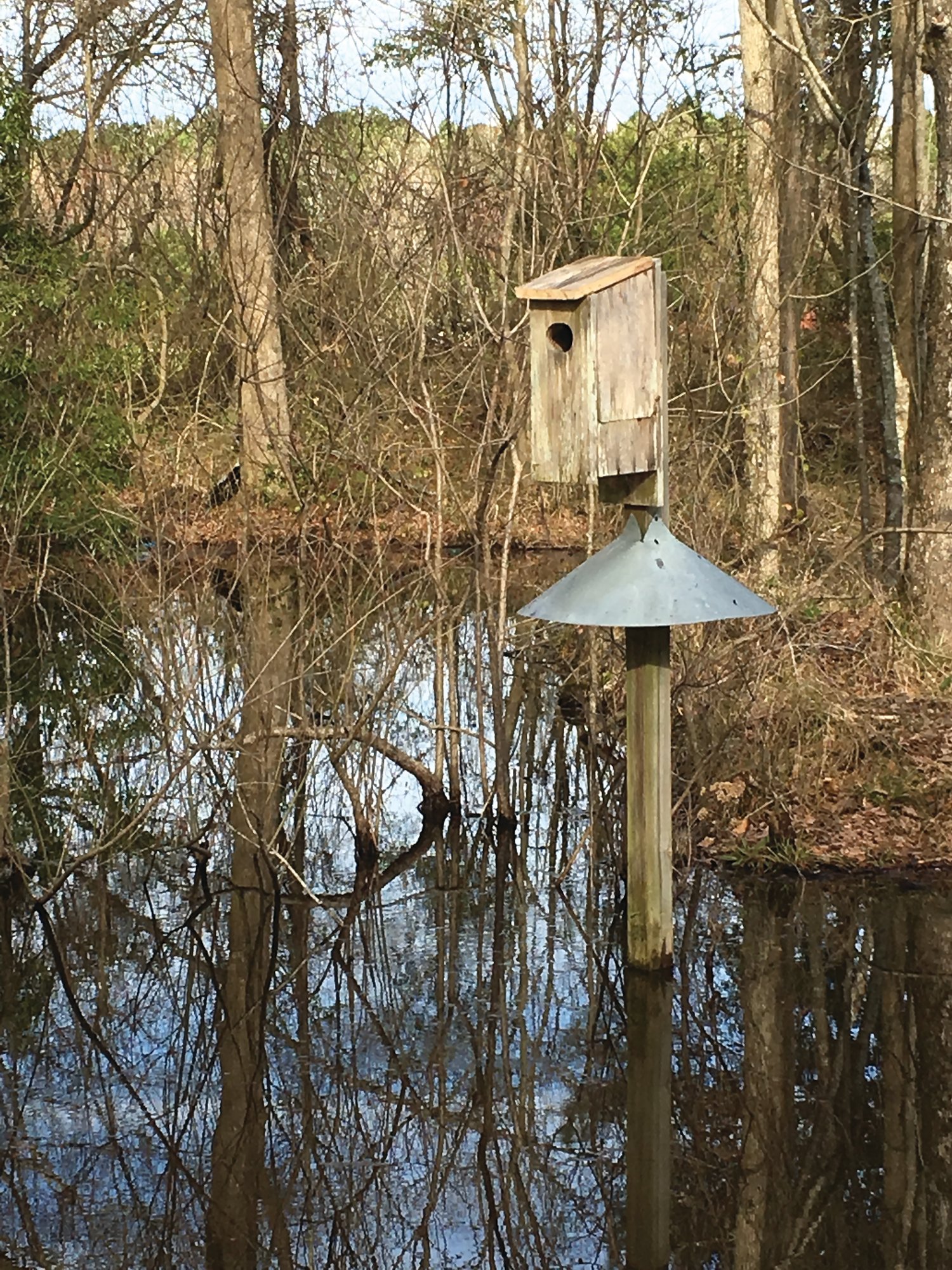It takes a little work
A wood duck nest box is seen on Dan Geddings' pond in Clarendon County.
Outdoors contributor
Sometimes my son Clayton has helped me, and my wife, Ginger, has also helped, but I can do it by myself when I need to. It does take a little work.
I hand carried everything into the woods from the truck, and it took several trips. I put a 10-foot 4-by-4 post on my right shoulder and carried a pair of hole diggers in my left hand. I went back and got lopping shears, a shovel and a hammer. The site was a little more than 100 yards into the timber.
I had picked out a spot that was at the current water's edge. Higher water levels in the near future will put the box out in shallow water, but I needed a dry site now to do the installation. There was a walking stick-sized vine that needed to be cut out of the way to get the box in the right spot. The box location is far enough away from the surrounding trees to keep the squirrels from jumping onto the box and setting up housekeeping. I returned to the truck for the nest box and the predator guard.
I used the lopping shears to cut the woody vine back and took the hole diggers and started a slightly oversized post hole in the soft black earth. Once I got the hole down about 3-feet deep, I went back to the truck and got a 50-pound bag of ready-mix concrete and a 6-foot stepladder. I also got a pocket full of nails.
Back at the site, I stood the post in the hole and plumbed it eyeball level while I poured the dry concrete in the hole around the post. The concrete is needed because the ground is so soft that the post will begin to lean if it is backfilled with the soft soil. I want the post to remain straight, so I add the concrete when I can.
Next, I took the metal predator guard and slid it over the top of the post and let it settle down to the ground, out of the way. The box has a small nail hole drilled through the top flange. I stuck a nail in the hole and placed the step-ladder on the side that I wanted the box to face. Next, I stepped up on the ladder and lifted the box up and held it in place while I drove the nail through the top flange into the post.
There is another small hole drilled at the bottom of the box. I hammered a nail through the bottom, and the box was now secured to the post. I lifted the predator guard up to the bottom of the box and held it in place while I nailed it to the post. I used the shovel to backfill the hole and tamp the fill around the post.
This nest box installation was done and ready for the ducks.
Wood ducks will begin nesting in February and will re-nest throughout the spring and summer if eggs or broods are lost to predators. Woodies are cavity nesters and will use natural tree hollows or man-made boxes. The man-made nest boxes will provide a high level of protection from predators.
The South Carolina Department of Natural Resources started distributing nest boxes to landowners with suitable wood duck nesting and brood rearing habitat in 1982. Applications for boxes are available online and will be accepted until all the available boxes are allocated.
The South Carolina Waterfowl Association began installing wood duck nest boxes on private and public land in 1987. Boxes can be purchased by landowners for installation or SCWA staff will install units for a fee.
DNR and SCWA have online plans that can be downloaded if individuals would like to build their own boxes.
I have 18 nest boxes on my property in Clarendon County and intend to add more in the future. The boxes are from a variety of sources to include SCDNR, SCWA and the old Lake Marion Waterfowl Association.
I moved to another area of the property and repeated the same process to install another nest box. I have two more boxes that can be installed but will need some drier conditions to locate those in a good spot. I can wait.
Reach Dan Geddings at cdgeddings@gmail.com.
More Articles to Read


